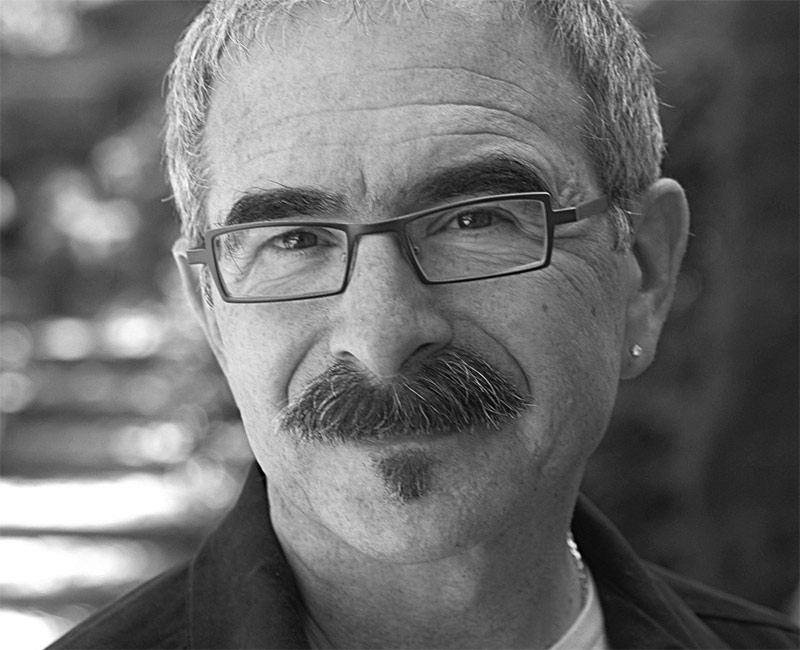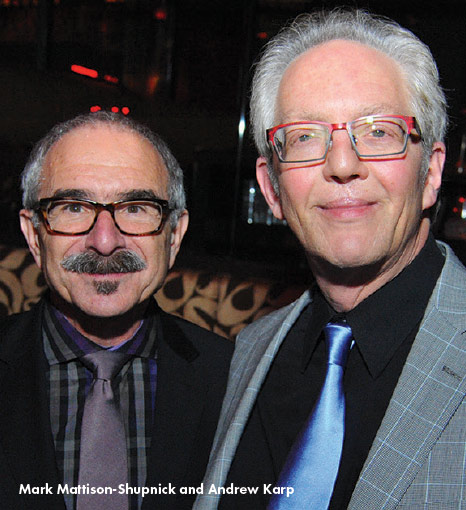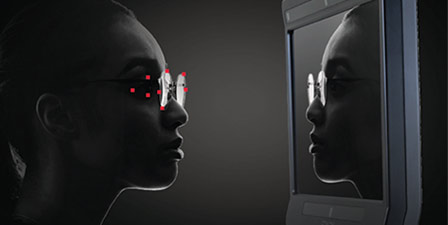By Deborah Kotob

In honor of the 50th anniversary issue of 20/20, I spoke with Mark Mattison-Shupnick, whose pioneering work creating and delivering CE in print and online for 20/20 became a key attraction for readers. CE continues to garner a vast audience of information seekers and test takers who need to renew their ABO/NCLE certification. Data tells us that the readership of this content goes well beyond test takers. It is read by eyecare professionals in medical and opticianry, as well as those outside these fields. Mark’s contributions cannot be overstated.
As most of you already know, Mark is an industry icon and mentor to many in the optical field, and my predecessor as Director of Education and Training for Jobson Optical Group. A master optician, his experience spans over five decades in the eyecare industry with roles encompassing academia, technical marketing, lens and frame manufacturing, COO and serving in the ANSI Z80.3 working group on spectral transmittance measurements. He used and shared his experiences and knowledge to help optical professionals learn and grow.
DK: Mark, I understand that Marc Ferrara and James Spina approached you at Vision Expo to head up CE for 20/20. It was no coincidence that your name was at the top of their list based on your background in academia and years in the industry, where your abilities in education played a key role. Perhaps you could share more about your prior work history, and how it molded and informed your approach to CE and education when you became the first Director of Education for Jobson.
MMS: Thanks, Deb, for the warm introduction. I think that my history shaped me well for the Jobson role. I started my optical life as a lab tech at NYC Community College in a new department named “Ophthalmic Dispensing.” This two-year program taught and trained students for opticianry in NYC. I maintained the equipment, helped students with their mechanical skills at making glasses, but also sat in on classes, quickly applied my own college background in bio and physics, and fell in love with the field. I was drafted into the U.S. Army in February 1969 and long story short, was a 42 Echo, Optical Lab Specialist. I spent about two years at an optical lab in Okinawa where we made thousands of glasses for GIs for Asia, Southeast Asia, the Philippines and Korea. I realized that making eyewear makes for a better optician because it refines one’s theoretical skills with glasses that actualize those skills. After returning to the U.S. in late ’71, I became an adjunct professor at the college, then left for California to start two more two-year programs in opticianry. I learned that I couldn’t be a good teacher unless I really understood the theoretical AND its actual application in a pair of glasses. I was also lucky to have a variety of advisors and colleagues, like Irwin Vogel, Russell Stimson, Mike Tiernan, George Tracewell, the ABO and FNAO, and of course my students, that made me better.
Next, I spent 21 years at SOLA, a lens manufacturer that refined plastic, high index and polycarbonate lens manufacture, progressive lens design and sun lens manufacture. My job was global, in technical marketing and product development, and allowed me to participate in an ANSI committee. But most of all, I continued teaching about products and their application, in front of employees, customers and at trade shows around the world. I guess you see a pattern here.
After leaving SOLA, I had more time with my family, cycled more, consulted, lectured and worked as an optician for a number of years. That’s when at Vision Expo, Marc and James asked me if I were interested in a part-time position as an education director for 20/20. I said yes, and like any new job, after a short while, to better understand the need as well as the opportunity, went from a few days a month, to 50 percent employee to effectively full time. I spent 14 years at the magazine.
When you started CE for 20/20, what was your thought process and vision for education in a trade publication?
I had learned two essential things as an optician in the field and as an adjunct professor of an optical program. First, most optical programs needed more real-life application to ensure that graduates would be sought for employment. Moreover, an experienced graduate started at a higher salary and was best prepared to pass the ABO exam. But there weren’t enough programs to educate new opticians, and learning from your boss and colleagues on the job limited you to their knowledge and skill level.
Starting out as the Director of Education for Jobson, I had to ask myself what role can a trade publication play in helping opticians maintain their accreditation by meeting their ABO/NCLE continuing education requirements while refreshing and furthering their optical education?
I believed that the growth of technology and product in optical was, and still is, driven by the companies and not by academia or professional organizations; their technical marketing information is critical, and its practical application essential to grow oneself as well as business. As a result, the magazine, with its long reach to all parts of the profession, could deliver materials tuned to each reader’s need, helping them grow individually.
Did this role stretch you? You told me that you reached beyond a purely academic approach with a determination to keep current with the latest developments in optical so that the content was relevant.
I was very stretched, but my previous experiences allowed me to “be comfortable being uncomfortable.” I’ve used that throughout my career. Each of my jobs took me to places of the unknown or one of investigation; as a teacher at heart, that makes for an opportunity for growth. And, yes, I was nervous and unsure plenty of times.

You shared that you did this by incorporating emerging modern technology into optical education emphasizing its relevance for the dispensing optician and optical business owners. Tell us more about this.
I was very lucky to work concurrently for all the big companies in helping to present their technologies as CE, in lectures to both internal employees as well as to their customers, both nationally and internationally, at trade shows and sales meetings. However, the CE was special. For me, it was because it had an exam, a way of making the test taker think and distill what they learned. I knew it worked because the first time, fail rate was high. Takers had to go back and really learn. The only thing it lacked was the practical side, but we left that to them at their jobs daily. I became known for the hard exam, but I saw that as an essential part of learning by CE. To opticians in the field today I would say this, knowledge and your ability to use it in a practical way is key to great glasses for your customers.
Jobson gave me an opportunity to teach to thousands, for me, a great job. Marc and James allowed me to grow CE through my ideas and initiative. Their full support made my job easier. Marge Axelrad provided important counsel. To Andy Karp, my technology partner and Christine Yeh, who both turned me into a real writer, and Regina Combs and the CE staff helped to make it happen. The only thing I didn’t like about my job were the deadlines but that’s publishing. Happy anniversary 20/20, I was very lucky to be part of those 50 years.
Mark, the optical industry owes you a debt of gratitude for all your contributions, and I am personally grateful to you for all you have done for me. On behalf of all of us at 20/20 and Jobson, past and present, we thank you.












